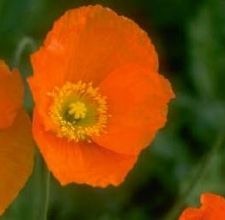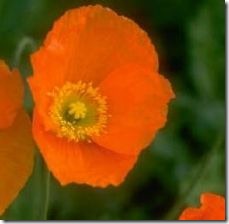The Versatile Poppy
-
Poppies of the genus Papaver are annuals, perennials or tender perennials grown as annuals. Perennial Oriental Poppies bloom in dark pink, reds and lavender; Iceland poppies are perennials grown as annuals; and annual Flanders and Shirley poppies bloom in a broad range of color from white to dark purple. California poppies are not Papaver at all but members of the genus Eschscholzia. They are wildflowers that close at night. No matter what type of poppy or what part of the world it hails from, each poppy carries on the family by reproducing itself by seed or, in the case of perennials, by root division.
Poppies by Seed
-

All poppies can reproduce from seeds, which develop as blooms fade. Seeds mature as the large green pod turns brown or gray as it dries. Once mature, a set of chemicals unique to each type of plant provides nutrients and triggers the seed’s germination in spring. Poppy seeds contain abscisic acid (ABA) which controls dormancy until conditions are right for germination. The winds of autumn or snows of winter force the pods to drop their seeds and falling leaves and snows cover the seeds to provide darkness and water that the seeds will need for germination. Come spring, the seed responds to the warmth and wetness of the soil and germinates. Plants mature with the longer daylight provided by the sun as its path rises in the spring sky and bloom in May or June. True poppy varieties bloom only once, then their fern-like leaves die down and a new growth of leaves begins for the summer. California poppies and some hybrids bloom all summer, setting seeds later in the summer.
Poppies by Division
-
Perennial poppies reproduce by root division in addition to by seed. With this method of reproduction, they are able to compensate for too much–or too little–rain, late freezes and other accidents or disasters of nature that might stop the progress of germination. The perennial poppy grows in clumps, starting new plants on underground roots each year before dormancy sets in. Each spring, these new plants, tethered to the parent, begin new growth beside the older plant. Even if all the seeds have blown away or been harvested, the young plants begin a new generation that will mature and begin dividing outward within a year or two. These new plants will grow together to form a dense mat of blooms around the original plant. The parent plant will die leaving dozens of plants where once there was only one. In nature, this natural thinning process can go on until large areas are covered with the nodding spring blooms.


Deprecated: strpos(): Passing null to parameter #1 ($haystack) of type string is deprecated in /home/agriviek8Qv/agriviet.net/public_html/wp-includes/comment-template.php on line 2522